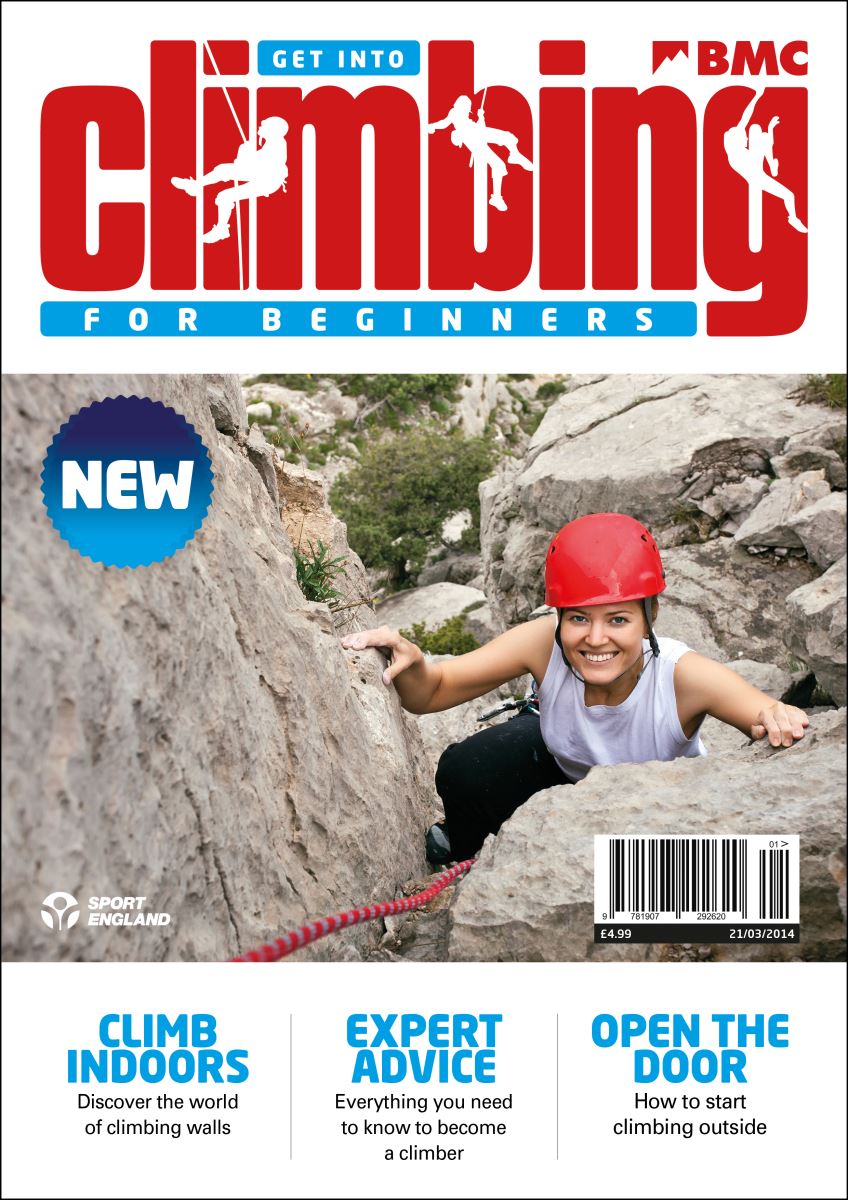Don’t know where to begin or what to wear? Worried your biceps aren't big enough? Let us clear some common beginner fears and questions out of your way in this article from our new special edition magazine: Get into Climbing.
Can anyone climb?
Yes. All climbing routes, whether hand-crafted indoors or natural lines on real rock, are logged and graded by difficulty so you can choose one to suit your level. This system allows you to gradually progress which can prove addictive. Why not make your first climbing move and find out if you’ll get hooked?
Most indoor climbing walls offer various beginner classes for little ones from around age five, to parents and other adults. Keep climbing and, like many, you could still be cranking well in to your 70s and 80s. People of all ages, genders, backgrounds and abilities can enjoy climbing their way to a calmer mind and stronger body while meeting like-minded friends.
Many people with physical, learning and sensory disabilities learn to climb successfully both indoors and out. Discover more about how people with disabilities can go climbing in the BMC Climbing For All booklet. The BMC Paraclimbing Series gains popularity year on year, and Britain's Fran Brown is a great inspiration as the current Paraclimbing World Champion in lead climbing.
I’ve never climbed before, where do I start?
There are six ways to try climbing:
-
Take classes at an indoor climbing wall
-
Join a climbing club
-
Take a course at an outdoor centre
-
Hire an outdoor instructor or Mountain Guide
-
Hire a climbing coach
-
Ask a friend who already climbs to teach you the ropes.
Will I need any specialist equipment to start out?
To try climbing at an indoor climbing wall, all you need are tight-fitting trainers or climbing shoes and comfy, unrestrictive clothes. All other equipment can usually be hired when you get there. As you progress you’ll probably want your own climbing shoes, harness, chalk bag, belay device and karabiner. Get advice from an expert before buying.
Will I get fit?
Climbing uses lots of muscle groups, both in the upper and lower body. Your back, abdominal and leg muscles all get exercised as well as your fingers, shoulders and arms. Regular climbing can improve stamina and endurance as well as muscle strength. In addition, all the reaching and stretching for holds improves flexibility and agility.
What if I’m scared of heights?
It’s natural to be scared of heights – instinct tells us that falling from a high place will hurt. Respecting that fear keeps you alive. Reviewing all the precautions prior to climbing is a good way to reassure a nervous climber – for example, checking their knot is tied correctly. Remember that you don’t have to climb to the top of a route every time; you can always ask your belayer to lower you back down. Next time you might be more confident and get to the top.
Don’t you need to be really strong to climb?
This is one of the most common misconceptions about climbing. Good technique is actually far more important than physical strength, although the more you climb the stronger and fitter you will become. Good footwork, body positioning and problem solving (or ‘reading the route’) will get you up many more climbs than just brute strength. You’ll also learn it’s more efficient to use the stronger muscles in your legs to push you up instead of relying on the weaker arm muscles.
Isn’t climbing really dangerous?
Climbing can be as safe or risky as you like. There are different styles and levels – it’s all about choice and experience. For example, you are very unlikely to get injured climbing on a top-rope or bottom-rope (when the rope runs through an anchor above you and is controlled by someone on the ground). Did you know: for an equivalent number of hours participating at school, a child is more likely to be injured while playing cricket (10 times more likely), playing football (32 times more likely) or playing rugby (72 times more likely) than while rock climbing (source: Royal Society for the Prevention of Accidents, see p9).
It’s important to remember that, as with any form of new exercise, if you have any doubt you should always speak with your doctor.
This article is an extract from Get into Climbing, our special edition magazine for beginners. The magazine contains 100 pages (over 30 articles) of essential information and expert advice on how to start climbing. Buy your copy from the BMC shop for just £5 (£3 for BMC members).

« Back